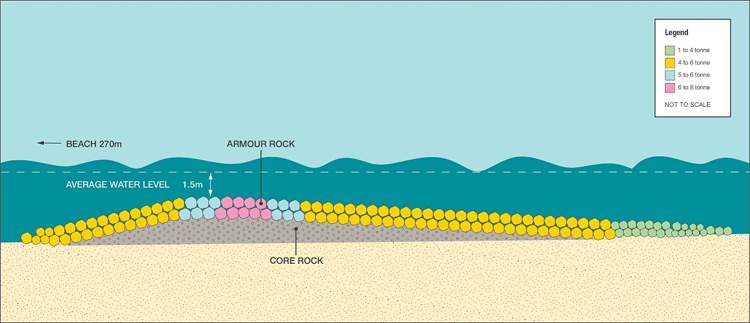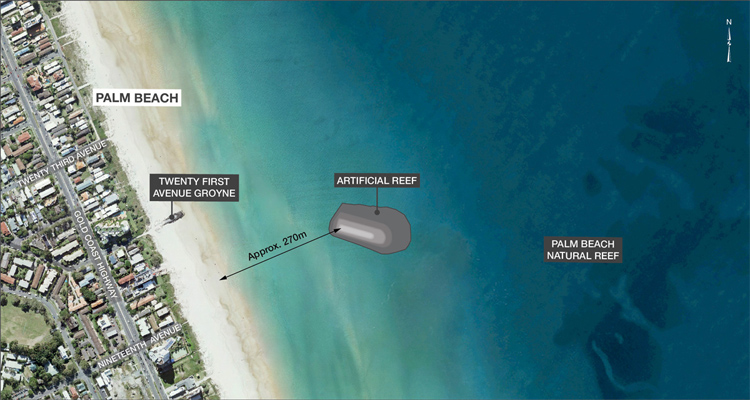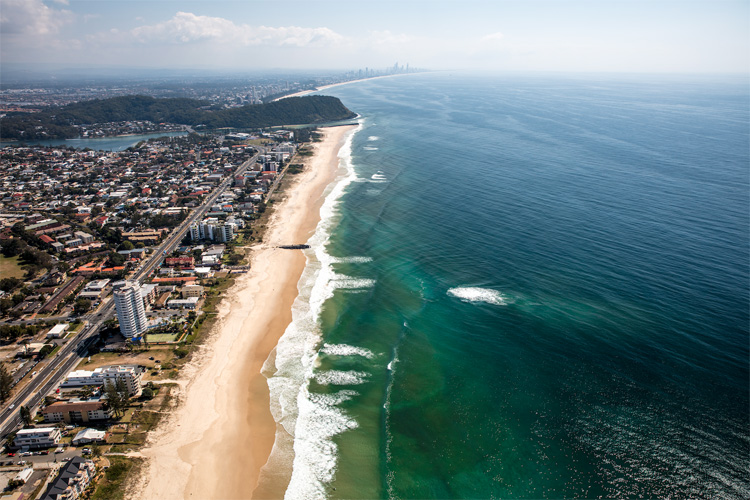In 2019, the city will be constructing an artificial reef as part of the Palm Beach Shoreline Project.
This complements the beach nourishment works that were completed in 2017, where citizens saw a large dredge delivering spectacular sand rainbows to the shore of Palm Beach.
The Palm Beach artificial reef will be built using large rock boulders weighing up to eight tons each and will be located approximately 270 meters offshore from 19th Avenue.
The structure will be 160 meters long and up to 80 meters wide, which means it would almost cover the Metricon Stadium field.
The artificial reef, at its highest point, will sit one and a half meters below the average water level.

An Old Problem
"Palmy" is one of the Gold Coast's most vulnerable beaches to the threat of coastal erosion.
Many swell events past and present have resulted in the loss of beach amenities, exposure of sea walls, and threatened homes and public infrastructure.
So, how will the reef help with combating coastal erosion?
On the Gold Coast, sand naturally moves north along the coast as a result of the predominant southeasterly wave direction.
This underwater structure will influence the surrounding waves and currents to slow the northern transport of sand around the reef temporarily.
The structure will hold the additional sand delivered through the previous beach nourishment works for longer and promote a long-term increase in sand along vulnerable sections of Palm Beach.
Once the sand has moved beyond the reef, it will naturally continue to move up the coast.
"Now, here is the part that may cause some confusion. A lot of the increase in sand will be located just offshore and not necessarily always visible to beach users," underlines the Palm Beach Shoreline Project.
"But rest assured. This sand will act as a buffer to protect Palm Beach from future erosion events, ensuring everyone can continue to enjoy their beach experience."

The Impact on Surfing
While the main purpose of the reef is coastal protection, the city understands how important surfing is to our culture and life.
Surfing has been kept in mind when designing the reef, and under certain swell conditions, it is predicted to be waves breaking on the reef, suitable for intermediate surfers.
"The Palm Beach Shoreline Project is part of the ocean beaches strategy, ensuring our beaches are clean, healthy, safe, and accessible now and into the future," add the Gold Coast authorities.
So, how do you design a reef? It's not just a simple pile of rocks. Coastal engineering projects of this nature are complex and challenging.
The city has worked with a team of world-class experts in coastal engineering to develop the best possible solutions specific to Palm Beach.
Significant investigation and effort have gone into the design, including computer modeling, wave tank testing, and real-life coastal data analysis.
Some pretty impressive marine construction vessels will be used to build the artificial reef between May and October 2019.
Tug boats and split hopper barges will transport the rocks from Brisbane to Palm Beach, where they will be placed on the seafloor.
A backhoe dredger will then accurately move the rocks into position using GPS technology to ensure the structure is built to the specific design.
While the reef has been built, there will be an exclusion zone around the offshore construction area to keep the public safe.
